
ricci_hm_clk_basics
.pdf
Cardiac Implantable Electronic Devices
Remote Monitoring
Home Monitoring (Biotronik) and
CareLink (Medtronic) systems
Basic Functioning and Organization
Renato P. Ricci
Cardiovascular Department
San Filippo Neri Hospital, Rome, Italy

Expected benefits from Remote Monitoring
Ø Early detection of device and lead malfunctions. Detection of battery depletion and abnormal device status (recall).
Ø Early awareness of diagnostic data stored in the device memory (atrial and ventricular arrhythmias, heart rate trends, daily activity, HRV, spontaneous beat percentages, ICD therapies)
Ø Continuous monitoring of device functions (threshold, sensing)
Ø Early reaction to change in clinical status and timely assessment of therapy changes
Ø Health Care Source saving by avoiding unnecessary visits.
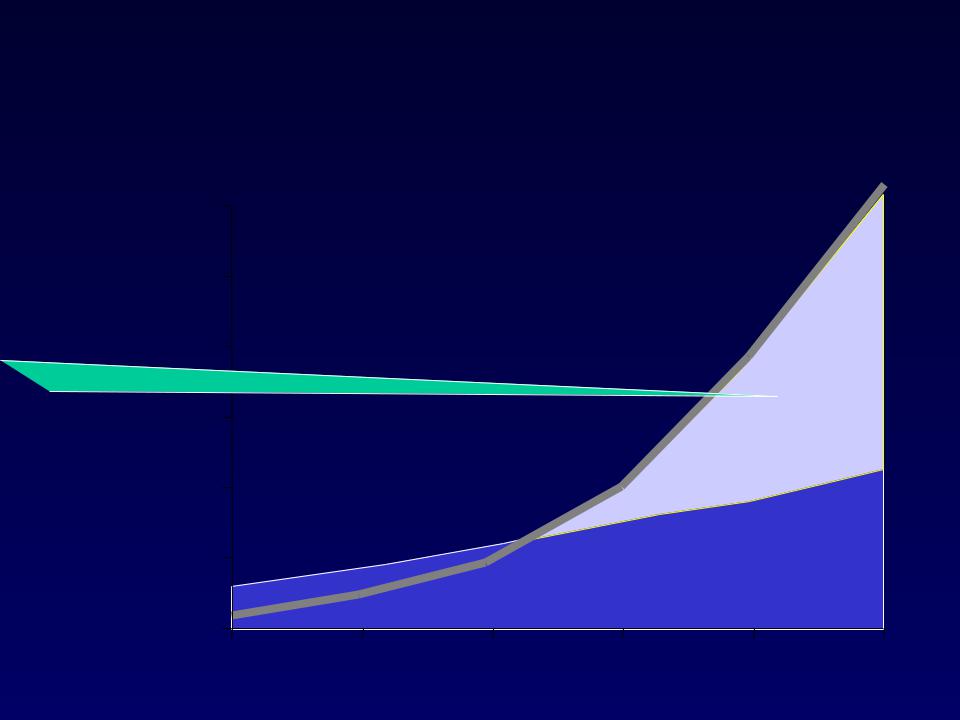
The New Scenario
2008
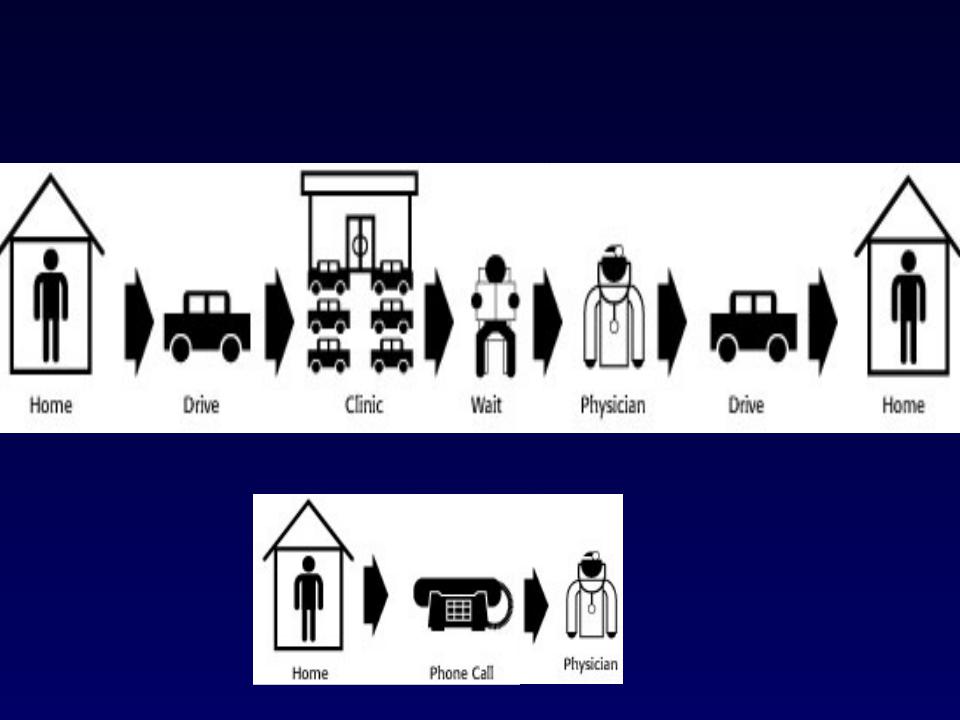
The New Opportunity

Care Link: How does it work?
Manual Transmission |
Automatic Transmission |
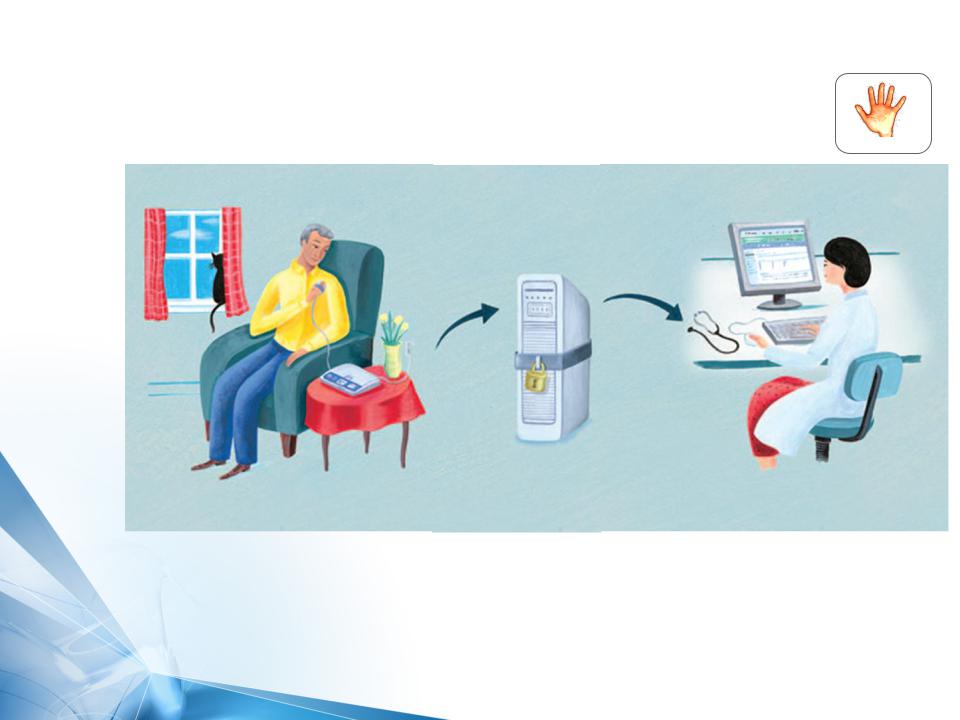
Manual transmission
The patient holds the mouselike antenna of Medtronic CareLink monitor over the implanted cardiac
device
Data are sent from the Medtronic CareLink monitor to a secure server via a standard phone line
The clinicians review the patients’ device data on the Medtronic CareLink Clinician website
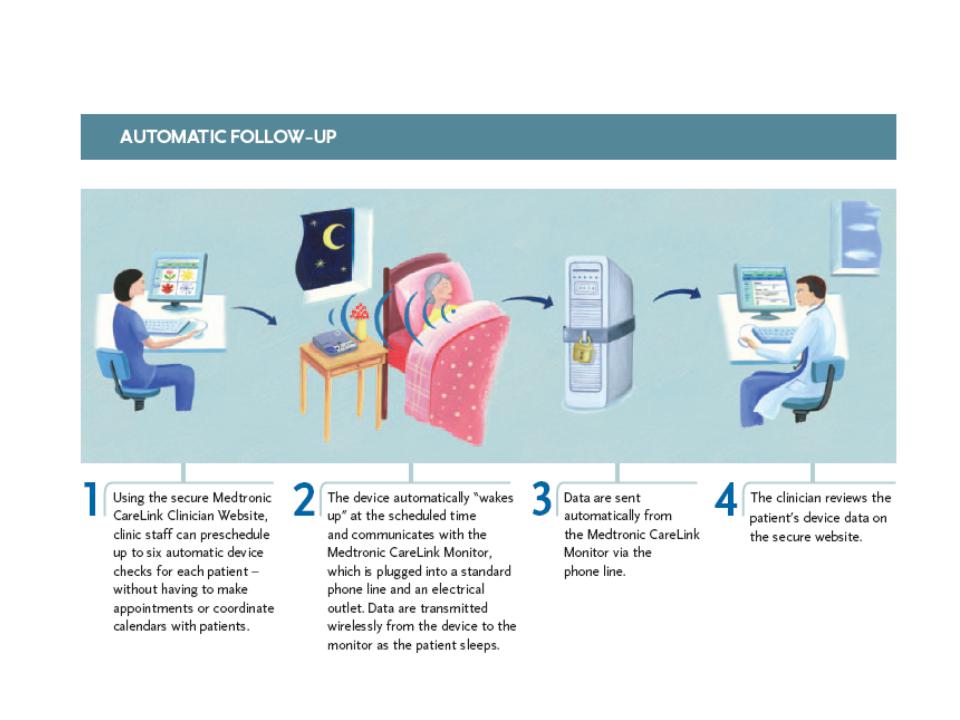
Automatic Transmission
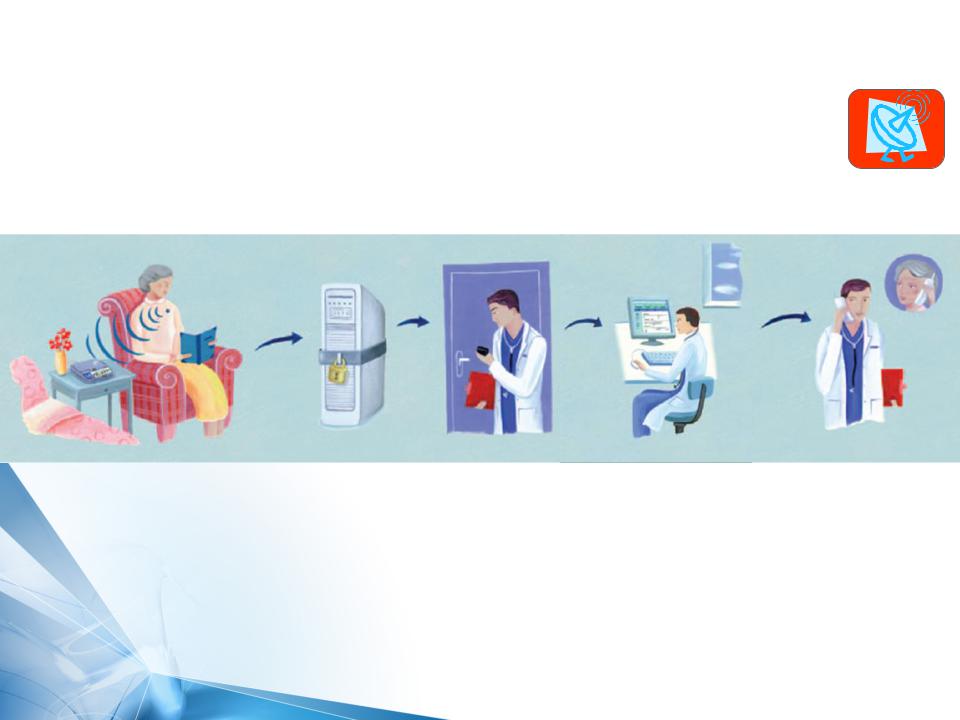
Automatic Trasmission
CareAlerts
Clinic staff can |
The device automatically |
preschedule up to 6 |
“wakes up” at the scheduled |
automatic device |
time and communicates with |
checks for each |
the Medtronic CareLink |
patient |
Monitor. Data are |
|
transferred automatically as |
|
the patient sleeps. |
Data are transferred |
The clinician |
to a secure server via |
reviews the |
the patient’s |
patient’s device |
standard phone line. |
data on the |
|
secure website |

Home Monitoring® Flow Chart (Biotronik)
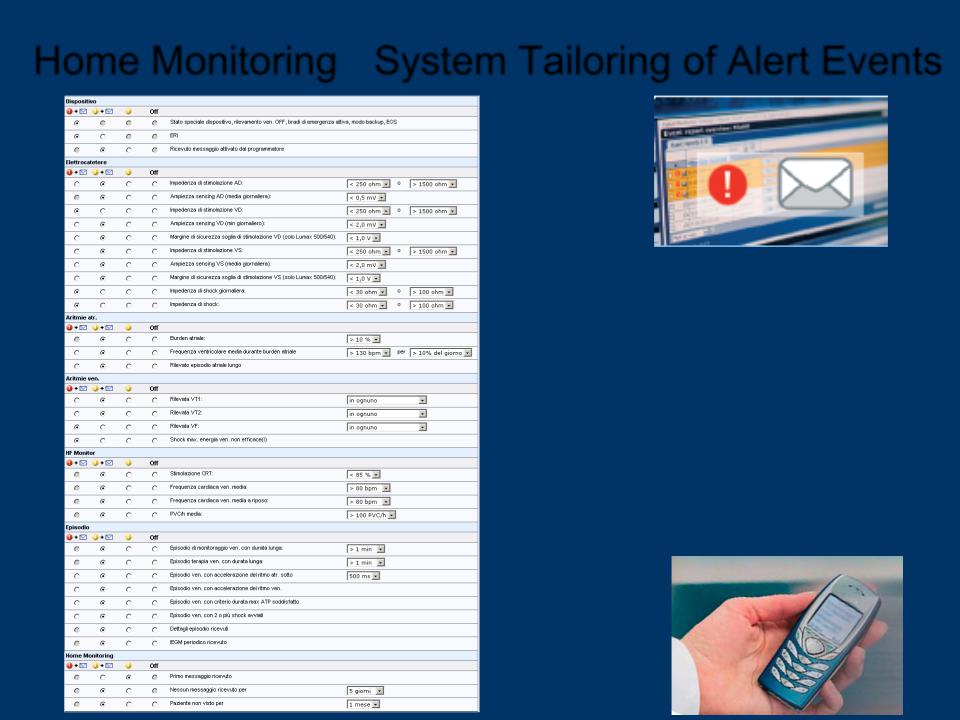
Home Monitoring® System Tailoring of Alert Events
For each patient, trigger events are selected on individual clinical evaluation and updated during the follow-up.
The alerts are addressed to the nurse responsible for the patient.
